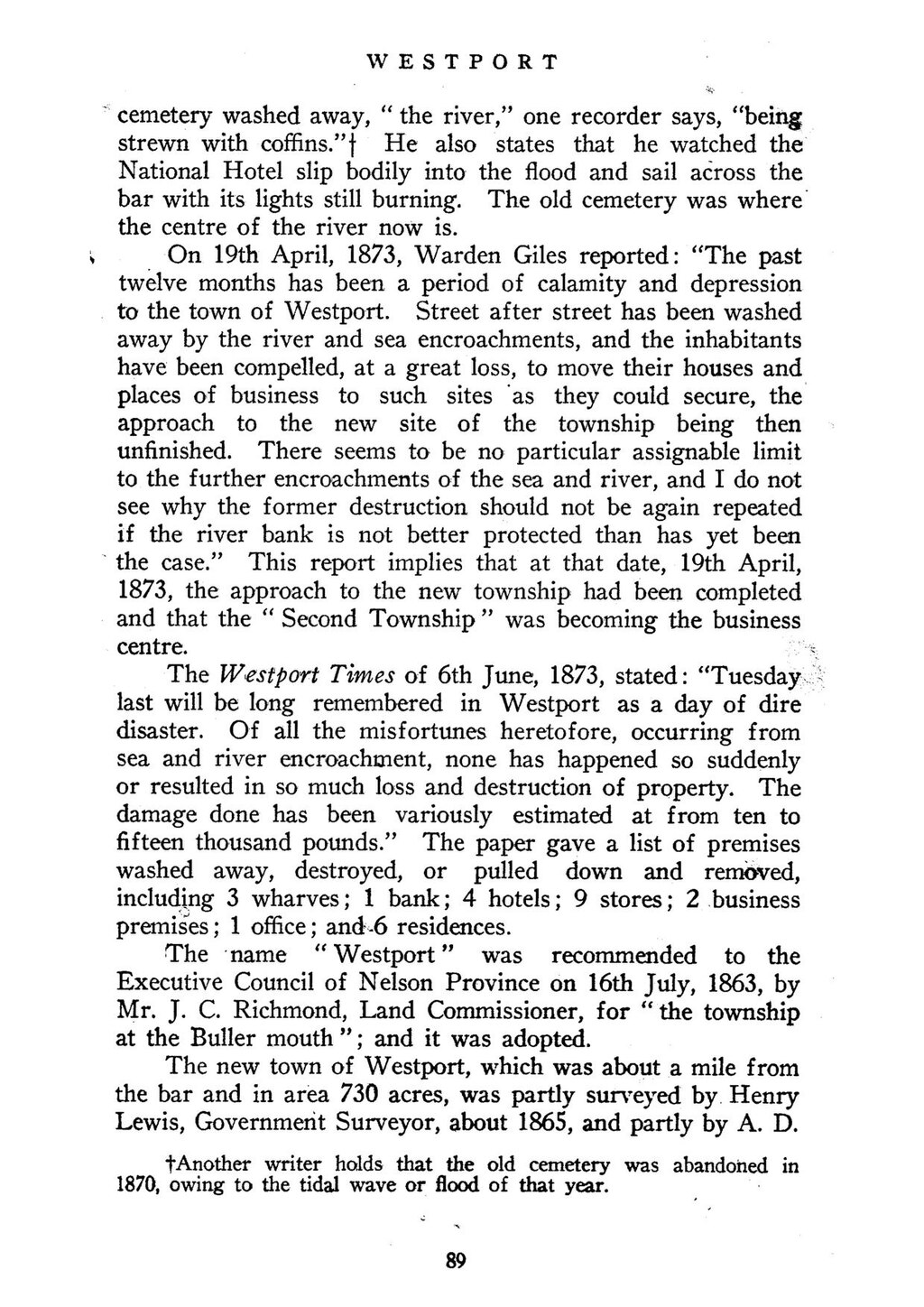WESTPORT
cemetery washed away, “the river,” one recorder says, “being strewn with coffins.”[1] He also states that he watched the National Hotel slip bodily into the flood and sail across the bar with its lights still burning. The old cemetery was where the centre of the river now is.
On 19th April, 1873, Warden Giles reported: “The past twelve months has been a period of calamity and depression to the town of Westport. Street after street has been washed away by the river and sea encroachments, and the inhabitants have been compelled, at a great loss, to move their houses and places of business to such sites as they could secure, the approach to the new site of the township being then unfinished. There seems to be no particular assignable limit to the further encroachments of the sea and river, and I do not see why the former destruction should not be again repeated if the river bank is not better protected than has yet been the case.” This report implies that at that date, 19th April, 1873, the approach to the new township had been completed and that the “Second Township” was becoming the business centre.
The Westport Times of 6th June, 1873, stated: “Tuesday last will be long remembered in Westport as a day of dire disaster. Of all the misfortunes heretofore, occurring from sea and river encroachment, none has happened so suddenly or resulted in so much loss and destruction of property. The damage done has been variously estimated at from ten to fifteen thousand pounds.” The paper gave a list of premises washed away, destroyed, or pulled down and removed, including 3 wharves; 1 bank; 4 hotels; 9 stores; 2 business premises; 1 office; and 6 residences.
The name “Westport” was recommended to the Executive Council of Nelson Province on 16th July, 1863, by Mr. J. C. Richmond, Land Commissioner, for “the township at the Buller mouth”; and it was adopted.
The new town of Westport, which was about a mile from the bar and in area 730 acres, was partly surveyed by Henry Lewis, Government Surveyor, about 1865, and partly by A. D.
- ↑ Another writer holds that the old cemetery was abandoned in 1870, owing to the tidal wave or flood of that year.
89
